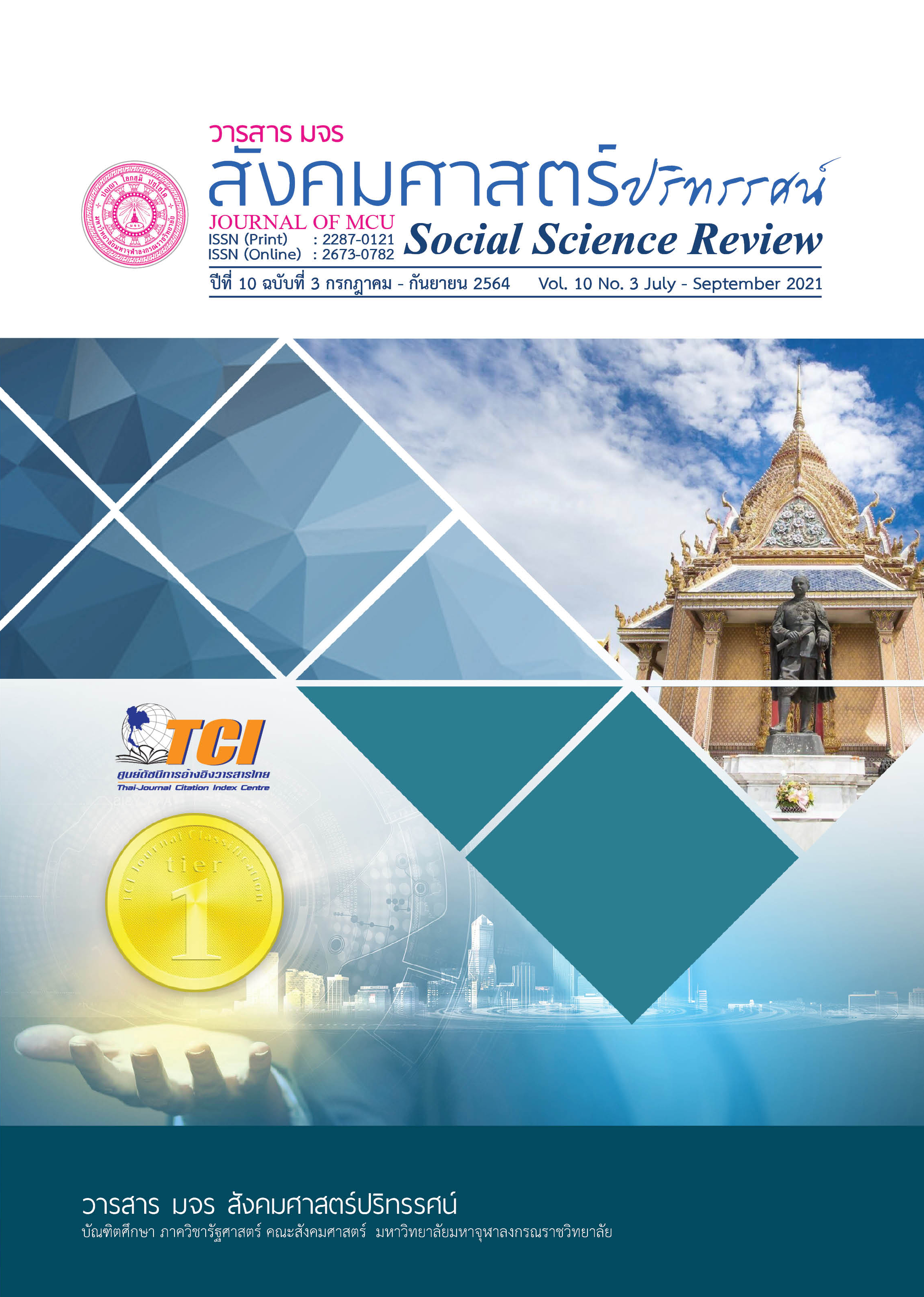การประยุกต์ใช้สังคหวัตถุธรรมกับความรับผิดชอบต่อสังคมขององค์กร
คำสำคัญ:
สังคหวัตถุธรรม, ความรับผิดชอบต่อสังคมขององค์กร, การพัฒนาที่ยั่งยืนบทคัดย่อ
บทความวิชาการนี้มุ่งนำเสนอหลักสังคหวัตถุธรรม ซี่งเป็นหลักธรรมที่เป็นการสงเคราะห์กันในสังคม เป็นธรรมที่ใช้ยึดเหนี่ยวจิตใจคนและประสานให้เกิดความรัก ความสามัคคีในสังคม ด้วยการให้ แบ่งปัน สิ่งของ ความรู้ วาจาไพเราะ ไม่บิดเบือนข้อมูลข่าวสาร การช่วยเหลือเกื้อกูล บำเพ็ญประโยชน์ เสียสละ ตลอดจนความเสมอต้นเสมอปลาย เสมอภาค ยุติธรรม กับ ชุมชน สังคม และประเทศชาติ ด้วยการช่วยเหลือสังคมขององค์กร (Corporate Social Responsibility) หรือ CSR ซึ่งเป็นแนวคิดสากลที่ได้รับการนิยมอย่างกว้างขวาง องค์กรที่ดำเนินธุรกิจมิต้องการเพียงผลกำไรเพียงอย่างเดียว ยังคงต้องคำนึงถึงผลกระทบต่างๆ ที่เกี่ยวกับผู้มีส่วนได้เสีย ชุมชน สังคม สิ่งแวดล้อม CSR มีขอบเขตที่นอกเหนือจากการบริจาคหรือการให้อย่างที่คุ้นเคยกัน ยังมีขอบเขตในด้านการใช้ทรัพยากรให้คุ้มค่า การดูผลกระทบของสิ่งแวดล้อมอย่างมีคุณธรรม จริยธรรมและจรรยาบรรณ เกิดการดำเนินการที่เสริมสร้างขีดความสามารถในการแข่งขันและส่งผลดีต่อการพัฒนาที่ยั่งยืนขององค์กร
เอกสารอ้างอิง
นพดล ดีไทยสงค์. (2563). คนรักเท่าผืนหนัง คนชังเท่าผืนเสื่อ: บริหารคนในองค์กรอย่างไรให้มีคนรักมากกว่าคนชัง. วารสาร มจร สังคมศาสตร์ปริทรรศน์, 9(3), 332-343.
พระพรหมคุณาภรณ์ (ป.อ. ปยุตฺโต). (2559). ธรรมนูญชีวิต (พิมพ์ครั้งที่ 141). กรุงเทพฯ: ธรรมสภา.
พระธรรมโกศาจารย์(ประยูร ธมฺมจิตฺโต). (2549). พุทธวิธีการบริหาร. กรุงเทพฯ: โรงพิมพ์มหาจุฬาลงกรณราชวิทยาลัย.
สมศักดิ์ สามัคคีธรรม. (2561). ธรรมาภิบาลและความรับผิดชอบต่อสังคม. กรุงเทพฯ: สำนักพิมพ์สถาบันบัณฑิตพัฒนบริหารศาสตร์.
สถาบันธุรกิจเพื่อสังคม (Corporate Social Responsibility Institute : CSRI) ตลาดหลักทรัพย์แห่งประเทศไทย. (2555). แนวทางความรับผิดชอบต่อสังคมของกิจการ. กรุงเทพ: บริษัท เมจิกเพรส จำกัด.
เอสซีจี. (2553). CSR ด้วยหัวใจใครๆ ก็ทำได้ (พิมพ์ครั้งที่ 2). กรุงเทพฯ: เอสซีจี.
Freeman. (1984). Strategic Management: A Stakeholder Approach. Boston: Pitman.
Hamidu et. al. (2015) . Corporate Social Responsibility: A Review on Definitions, Core Characteristics and Theoretical Perspectives. Mediterranean. Journal of Social Sciences, 6(4), 85-87.
Porter et al. (2006). Strategy and Society: The Link Between Competitive Advantage and Corporate Social Responsibility. Retrieved March 20, 2020, from https://www.researchgate.net/publication/6616248_Strategy_and_Society_The_Link_Between_Competitive_Advantage_and_Corporate_Social_Responsibility
ดาวน์โหลด
เผยแพร่แล้ว
รูปแบบการอ้างอิง
ฉบับ
ประเภทบทความ
สัญญาอนุญาต
ลิขสิทธิ์ (c) 2021 วารสาร มจร สังคมศาสตร์ปริทรรศน์

อนุญาตภายใต้เงื่อนไข Creative Commons Attribution-NonCommercial-NoDerivatives 4.0 International License.
เพื่อให้เป็นไปตามกฎหมายลิขสิทธิ์ ผู้นิพนธ์ทุกท่านต้องลงลายมือชื่อในแบบฟอร์มใบมอบลิขสิทธิ์บทความให้แก่วารสารฯ พร้อมกับบทความต้นฉบับที่ได้แก้ไขครั้งสุดท้าย นอกจากนี้ ผู้นิพนธ์ทุกท่านต้องยืนยันว่าบทความต้นฉบับที่ส่งมาตีพิมพ์นั้น ได้ส่งมาตีพิมพ์เฉพาะในวารสาร มจร สังคมศาสตร์ปริทรรศน์ เพียงแห่งเดียวเท่านั้น หากมีการใช้ภาพหรือตารางหรือเนื้อหาอื่นๆ ของผู้นิพนธ์อื่นที่ปรากฏในสิ่งตีพิมพ์อื่นมาแล้ว ผู้นิพนธ์ต้องขออนุญาตเจ้าของลิขสิทธิ์ก่อน พร้อมทั้งแสดงหนังสือที่ได้รับการยินยอมต่อบรรณาธิการ ก่อนที่บทความจะได้รับการตีพิมพ์ หากไม่เป็นไปตามข้อกำหนดเบื้องต้น ทางวารสารจะถอดบทความของท่านออกโดยไม่มีข้อยกเว้นใดๆ ทั้งสิ้น





